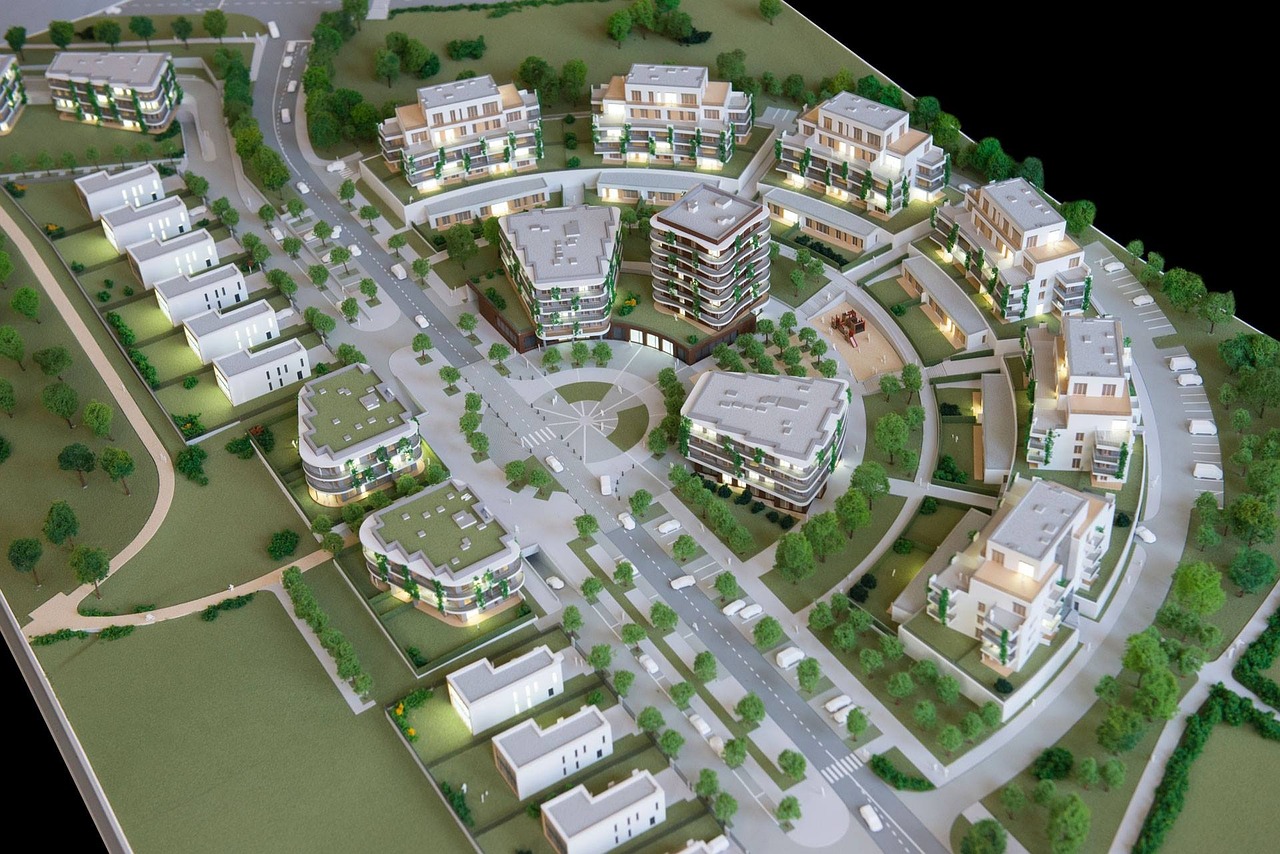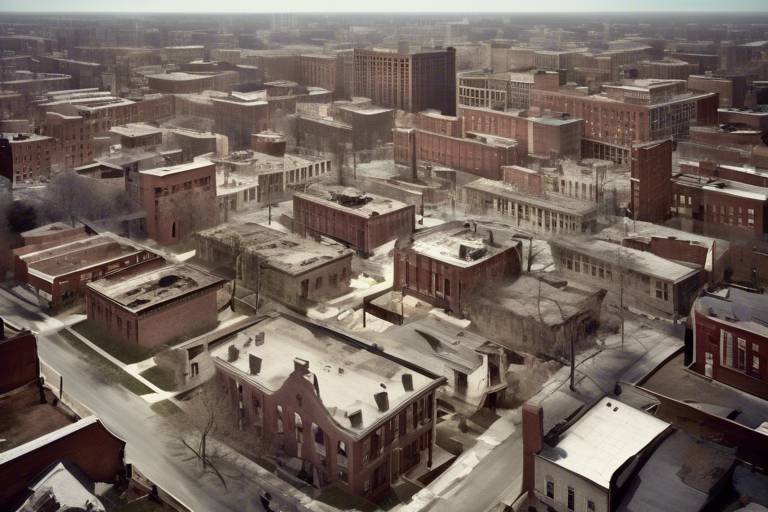The Role of Historic Preservation in Urban Planning
Historic preservation plays a crucial role in shaping the landscape and identity of urban areas. By safeguarding significant buildings and sites, cities can retain their cultural heritage and charm, offering a glimpse into the past while paving the way for a sustainable future. The integration of historic preservation into urban planning processes not only preserves the unique character of a city but also contributes to its economic growth and environmental sustainability.

Preservation as Cultural Identity
Preservation as Cultural Identity plays a crucial role in shaping the character and essence of a city. By safeguarding historic landmarks and sites, cities preserve their unique heritage and charm, creating a sense of belonging and pride among residents. These preserved sites serve as a visual narrative of a city's history, connecting past generations with the present and offering a glimpse into the cultural richness that defines the community.
When visitors explore preserved historic buildings, they are not just witnessing architectural marvels; they are immersing themselves in the stories and traditions that have shaped the city over time. Tourists are drawn to these sites, eager to delve into the cultural tapestry woven by generations past. The intricate details of preserved structures serve as a living testament to the city's evolution, inviting visitors to step back in time and experience the essence of the community.
Moreover, preserving cultural identity through historic landmarks is not merely about nostalgia or sentimentality. It is a strategic investment in the city's future. By maintaining these sites, cities create a unique selling point that sets them apart in a globalized world. In an era where urban landscapes are increasingly homogenized, preserving cultural identity becomes a beacon of authenticity, attracting visitors seeking genuine experiences and fostering a sense of place that resonates with both locals and tourists alike.
Through preservation as cultural identity, cities celebrate their roots while embracing progress. It is a delicate dance between honoring the past and embracing the future, creating a harmonious blend of tradition and innovation that defines the soul of a city. In essence, preserving cultural identity is not just about conserving buildings; it is about safeguarding the stories, traditions, and values that make a city truly unique.

Economic Benefits of Preservation
The economic benefits of historic preservation are multifaceted and play a crucial role in the overall development and prosperity of cities. When old buildings and sites are preserved, they not only retain their historical significance but also become valuable assets that contribute to the local economy in various ways.
One significant economic benefit of preservation is the stimulation of job creation. Restoration projects require a diverse range of skilled labor, from architects and engineers to craftsmen and artisans. This creates employment opportunities within the community, boosting economic activity and fostering a sense of pride in preserving local heritage.
Furthermore, the adaptive reuse of historic buildings can lead to increased property values in surrounding areas. Renovated historic properties often become sought-after real estate, attracting businesses, residents, and tourists. As a result, property values rise, generating higher tax revenues for the city and enhancing the overall attractiveness of the neighborhood.
Tourism revenue is another key economic driver that stems from historic preservation efforts. Preserved landmarks and heritage sites draw visitors who are interested in exploring the city's history and culture. This influx of tourists not only supports local businesses such as restaurants, shops, and accommodations but also creates a ripple effect of economic growth throughout the community.
In essence, the economic benefits of historic preservation extend far beyond the preservation of buildings themselves. They contribute to the vitality of urban economies, create employment opportunities, increase property values, and attract tourism revenue, ultimately playing a vital role in the sustainable development and revitalization of cities.

Sustainability and Environmental Impact
Preservation of historic buildings and sites plays a crucial role in promoting sustainability and minimizing the environmental impact of urban development. By reusing existing structures instead of demolishing them, cities can significantly reduce the need for new construction, thereby conserving resources and minimizing carbon emissions. This aligns with sustainable development goals by promoting responsible use of resources and reducing the overall ecological footprint of urban areas.
Furthermore, the adaptive reuse of historic buildings often involves incorporating energy-efficient technologies and sustainable practices, such as installing solar panels, using recycled materials, and implementing green building strategies. These initiatives not only help in preserving the cultural heritage but also contribute to environmental stewardship by promoting eco-friendly solutions in urban planning.
Moreover, the preservation of historic sites can serve as a model for sustainable development, showcasing how cities can balance growth and conservation to create vibrant and resilient communities. By integrating historical buildings into modern urban landscapes, cities can achieve a harmonious blend of past and present, demonstrating the value of preserving heritage for future generations.

Challenges in Preservation Planning
Preservation planning presents a unique set of challenges that urban planners must navigate to balance the preservation of historic sites with the demands of modern development. One of the primary challenges lies in zoning regulations, as historic buildings often have specific requirements for renovation and use that may conflict with current zoning laws. This can create hurdles in adapting these structures for contemporary purposes while preserving their historical integrity.
Another significant challenge is securing funding for preservation projects. The costs associated with restoring and maintaining historic buildings can be substantial, and finding financial resources to support these endeavors can be a complex process. Identifying sustainable funding sources and leveraging public-private partnerships are crucial strategies in overcoming this obstacle.
Community engagement is also a key challenge in preservation planning. Involving local residents in decision-making processes regarding historic sites can be contentious, as differing opinions on the value of preservation versus development may arise. Building consensus among stakeholders and fostering open communication are essential in addressing these conflicts and ensuring that preservation efforts align with the community's needs and aspirations.
Furthermore, the lack of comprehensive data and documentation for historic structures can pose challenges in preservation planning. Without accurate records and information about the architectural significance and historical context of a building, making informed decisions about its preservation and adaptive reuse becomes difficult. Investing in documentation efforts and utilizing technological innovations such as 3D modeling can help overcome this barrier.
In addition, navigating the regulatory landscape surrounding historic preservation presents challenges for urban planners. Understanding and complying with legal frameworks and regulations designed to protect historic sites is essential but can be a complex and time-consuming process. Striking a balance between regulatory compliance and practical preservation goals requires expertise and collaboration with legal professionals specialized in historic preservation.
Overall, addressing the challenges in preservation planning requires a multidisciplinary approach that integrates urban planning principles with historical preservation practices. By overcoming these obstacles through strategic planning, community engagement, and innovative solutions, cities can successfully preserve their cultural heritage while promoting sustainable development for future generations.

Community Engagement and Social Impact
Community engagement plays a vital role in the preservation of historic buildings and sites, as it involves local residents in decision-making processes that impact their neighborhoods. By actively involving the community in preservation efforts, a sense of ownership and pride is cultivated, leading to increased social cohesion and a shared responsibility for maintaining the cultural heritage of the area. This engagement not only preserves community histories for future generations but also fosters a deeper connection between residents and their surroundings.

Legal Frameworks and Regulations
When it comes to historic preservation in urban planning, legal frameworks and regulations play a crucial role in safeguarding the cultural heritage of cities. These laws are put in place to protect historic sites from demolition or insensitive alterations, ensuring their long-term preservation for future generations. By establishing clear guidelines and standards, legal frameworks provide a roadmap for urban planners and developers to navigate the complexities of balancing preservation with development.
One key aspect of legal frameworks is the designation of historic districts or landmarks, which grants special protections and incentives for property owners to maintain the historical integrity of their buildings. These designations often come with specific regulations regarding building alterations, additions, and demolitions to preserve the architectural character of the area.
Additionally, zoning regulations play a significant role in preservation planning by dictating how historic properties can be used and developed. Zoning laws may restrict certain types of construction or activities within historic districts to prevent incompatible development that could compromise the authenticity of the area.
Moreover, financial incentives and tax credits are often included in legal frameworks to encourage property owners to invest in the preservation of historic buildings. These incentives help offset the costs of rehabilitation and maintenance, making it more financially viable for owners to retain and restore historic structures.
Enforcement mechanisms are also essential components of legal frameworks, ensuring that regulations are followed and penalties are imposed for non-compliance. By holding property owners and developers accountable for adhering to preservation guidelines, these mechanisms help maintain the integrity of historic sites and prevent unauthorized alterations that could diminish their cultural value.

Technological Innovations in Preservation
Technological innovations play a crucial role in the field of historic preservation, revolutionizing the way we conserve and restore our cultural heritage. With the advancement of digital mapping technologies, preservationists can now create detailed and accurate models of historic structures, allowing for precise restoration work. 3D modeling has also become a valuable tool in preservation efforts, enabling experts to visualize and plan conservation projects with unprecedented accuracy.
Furthermore, the development of new building materials has significantly enhanced the preservation process. These innovative materials not only help in maintaining the authenticity of historic structures but also improve their durability and longevity. By combining traditional preservation techniques with modern materials, preservationists can ensure the continued existence of our architectural heritage for future generations.
Technology has also facilitated the documentation and monitoring of historic sites, enabling preservationists to track changes and deterioration over time. This real-time data allows for proactive maintenance and intervention, preventing further decay and ensuring the ongoing preservation of valuable cultural assets.

International Perspectives on Preservation
When it comes to historic preservation, looking at international perspectives can offer valuable insights into various approaches and strategies adopted by different countries. Each nation has its own unique cultural heritage and challenges when it comes to preserving historic buildings and sites.
For example, some countries may prioritize the restoration of iconic landmarks for tourism purposes, while others focus on integrating historic structures into modern urban development plans. By studying these diverse approaches, urban planners and preservationists can learn from successful initiatives and adapt them to their own contexts.
Additionally, international collaboration in the field of historic preservation allows for the exchange of knowledge, expertise, and resources. This sharing of best practices can lead to innovative solutions to common preservation challenges, such as funding constraints, lack of public awareness, or conflicting development interests.
Moreover, understanding how different cultures value and interpret their heritage can influence preservation decisions and strategies. By respecting and incorporating diverse perspectives, urban planning efforts can be more inclusive, sustainable, and culturally sensitive.
Frequently Asked Questions
- What is the importance of historic preservation in urban planning?
Historic preservation plays a crucial role in urban planning by maintaining a city's cultural identity, stimulating economic growth, promoting sustainability, and fostering community engagement.
- How does preserving historic landmarks contribute to economic development?
Preserving historic buildings and sites can boost local economies by creating jobs, increasing property values, attracting tourists, and supporting urban revitalization efforts.
- What are the challenges faced in preservation planning?
Challenges in preservation planning include balancing historic preservation with modern development, navigating zoning regulations, securing funding, and ensuring community involvement in decision-making processes.
- What role does community engagement play in historic preservation?
Community engagement is vital in historic preservation as it fosters a sense of ownership, pride, and social cohesion among residents, preserving neighborhood histories and ensuring sustainable urban development.
- How do technological innovations contribute to historic preservation?
Technological advancements such as digital mapping, 3D modeling, and modern building materials enhance the accuracy and efficiency of restoration and conservation efforts, blending traditional preservation methods with contemporary tools.



















